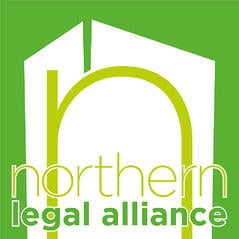We need to talk about pricing
 You have been asked to do a piece of work, diligently send out your standard letter of engagement, when the client calls uttering the dreaded words…‘the fee is a bit higher than I was expecting – if you can get that down a bit, I’d be happy for you to proceed with the work’. If this situation fills you with dread, fear not! With a little thought and a proper ‘toolkit’, you can confidently go into a conversation with your client on the pricing topic in the future.
You have been asked to do a piece of work, diligently send out your standard letter of engagement, when the client calls uttering the dreaded words…‘the fee is a bit higher than I was expecting – if you can get that down a bit, I’d be happy for you to proceed with the work’. If this situation fills you with dread, fear not! With a little thought and a proper ‘toolkit’, you can confidently go into a conversation with your client on the pricing topic in the future.
Believe it or not, armed with the right knowledge and skills, you don’t need to default to discounting your pricing when a client queries them. A number of surveys on legal and professional services fees have found that the most important factor for clients is usually not lowest price. Obviously this may vary slightly depending on work type, but other factors have consistently been found more influential. The key influences are that the prices are transparent, guaranteed and value based. So, how do you move your firm towards a better pricing model, and ensure it is consistently applied? Well, I recently attended a seminar by Nigel Haddon, a Pricing Consultant at Burcher Jennings, who had some very useful tips on this.
First and foremost, get a feeling for the clients‘ objectives – for example, how urgently does the work need done, how important is it to them, what is their risk appetite. Next, you may also want to factor in whether it is a one-off piece of work, or if there is an opportunity for repeat or volume work in the future. This, along with a clear understanding of what the work involves, allows you to consider the appropriate fee.
On the initial enquiry call, make it standard practice to buy yourself fifteen or twenty minutes to “run it past a colleague”. Next, make sure you do just that! Simply having a chat with a colleague will provoke greater challenge around your initial perception of the work involved, how long it is likely to take etc. You will probably find that eight or nine times out of ten, it is necessary to increase the price you were originally thinking of quoting.
Next, clearly set out to the client what the fees are, giving them at least two options. This part may be an entirely new concept, but hearing Nigel explain it, it actually makes a lot of sense. Most importantly, all of the options must work for you, but for sometimes inexplicable reasons, one will probably appear more appealing or better value to the client.
As an example, for a piece of work which needs to be done by the end of the week, and is of extremely high importance to the client, you could offer the following options: (1) an hourly rate of X, being a 25% premium on your standard hourly rate; (2) a fixed fee of £4500; or (3) a fixed fee of £4000 if paid upfront.
Rarely will the client walk away, or even shop around, when presented with such a choice. More likely, they will like one of your options, depending on the particular circumstances in which they find themselves.
I hope these tips are useful to you – I know they certainly make a lot of sense to me, thinking back to my days in legal practice. In addition to ensuring there is clear consensus with your client on their objectives, by taking some time to think about why you are seeking to charge certain rates, and clearly explaining them, with various options, you are less likely to get push back from the client later down the line, and even if you do, you can be far more prepared for that discussion, and confident in your justification.
Gregor Angus, Head of Business Development Scotland at The Cashroom Ltd



